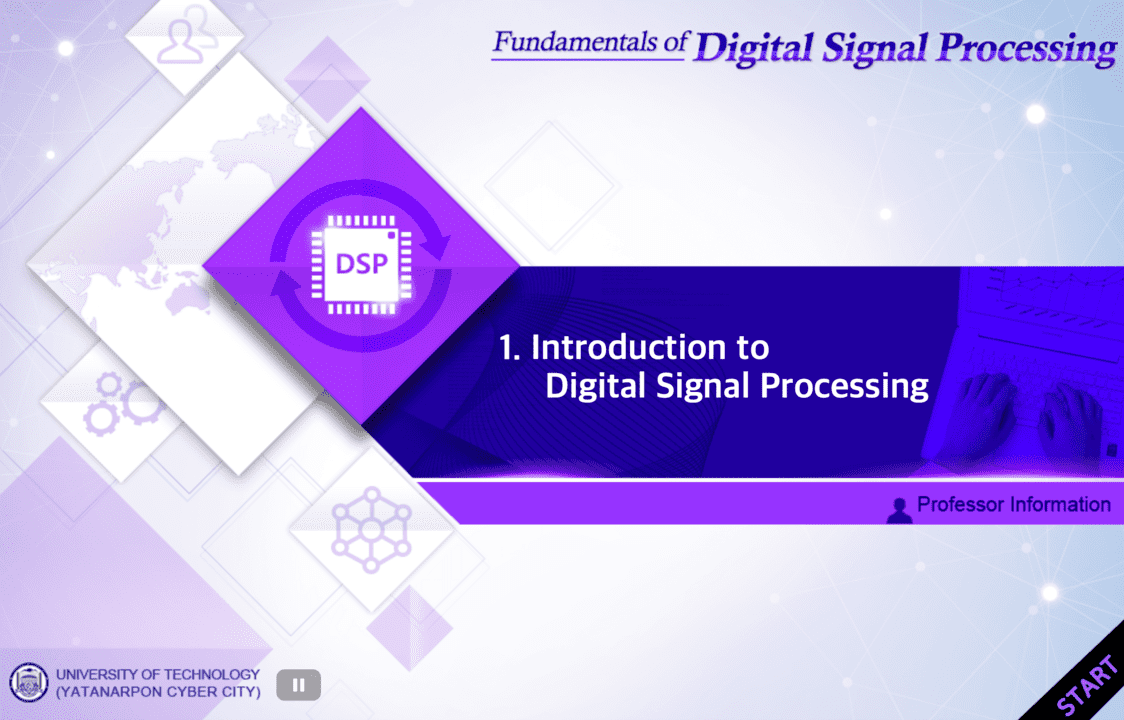Introduction to Digital Signal Processing
-
 Add Bookmark
Add Bookmark
- Category : Engineering > Computer Science
- Keyword : Signal ProcessingSamplingZ-TransformDiscrete-Time SystemFourier Transform
- Taught by : Chaw Su
- Created By : University of Technology(Myanmar)
- Offered By : ASEAN Cyber University
- Date Added : 2019.09.17
To learn the fundamentals of digital signal processingTo describe a signal mathematicallyTo know the advantages of digital over analog signal processorTo represent the sampling theorem and understand the quantizer operationTo explain a number of important types of signalsTo classify the systems according to the general propertiesTo investigate some important properties of convolutionTo describe linear time-invariant systems by difference equationsTo analyze the signals and linear time-invariant (LTIsystems by using transform techniquesTo associate the knowledge of properties of ROC To evaluate the output of non-relaxed systemsTo analyze the frequency of signals and systemsTo analyze the characteristics of signals in the frequency domainTo perform spectral shaping or frequency-selective filtering.

This work is licensed under a
Creative Commons
Attribution-NonCommercial 4.0
International License.- User Rating :
- Comments : 0
- Hits : 2067









